Results
-
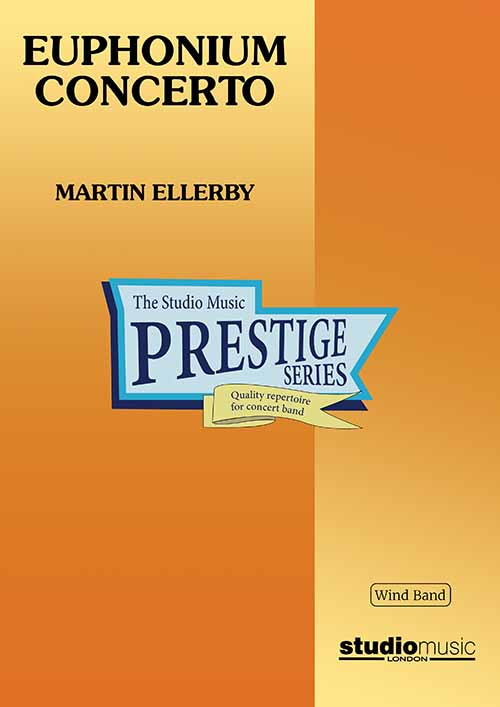 £164.95
£164.95Euphonium Concerto (Concert Band - Score and Parts) - Ellerby, Martin
This Euphonium Concerto was written between late 1994 and early 1995 in response to a commission from Steven Mead to whom the work is dedicated. It is cast in four movements and lasts a little over 22 mins:I. Fantasy: After the briefest of introductions, the solo euphonium enters with the key melodic phrase of the movement in a fast 'Tempo I'. This idea is developed up to the point where a slower 'Tempo II' breaks the argument - here the mood is reflective but it is only to be a brief interruption as 'Tempo I' returns very quickly. The opening material is then subjected to further transformation with 'Tempo II' making occasional returns en route, the distances between the contrasting tempi becoming ever closer, and the movement closes in a rather soft though definite manner.II. Capriccio: This relatively short presto movement forms a bridge between the first movement and the work's slow movement. The majority of the band parts are bright and muted with the percussion players enhancing the texture with contributions from xylophone, glockenspiel and vibraphone. Again the initial solo euphonium phrase provides the basis for almost all the movement's material. This is extremely virtuosic for the soloist and band alike and makes great play of the rhythmic possibilities of combining simple and compound music either in close proximity or together.III. Rhapsody (for Luis): A Lento movement, sitting between two different but essentially rapid ones, this provides the work's emotional core exploiting the soloist's cantabile qualities in an almost seamless fashion. Again, as will all the work's movements, the initial idea paves the way for subsequent development, eventually culminating in a passionate climax; thereafter it winds down with an affectionate backward glance towards the close of the the slow movement of the Euphonium Concerto of Joseph Horovitz, whose mark had been made indelibly on the euphonium repertoire. This movement is dedicated to Luis Maldonado who set the full score of the brass version before his untimely death.IV. Diversions: The work's variation finale is cast in 3/4 throughout though the barline is often a guideline and was seen by the composer as a challenge of metrical restraint! There is an obvious jazz feel to this movement (both rhythmically and harmonically) with a swaggering ritornello theme first announced by the solo euphonium. Thereafter follows a series of interludes and 'adjusted' returns of the main theme. A lyrical idea is allowed to enter but the underlying momentum is ever present. The band also contributes to the interludes and eventually the tempo increases towards a 'wild' and absolute conclusion.Duration: 22.30Recorded on QPRM143D Dreamscapes, Royal Northern College of Music Wind Orchestra
Estimated dispatch 7-14 working days
-
 £32.95
£32.95Euphonium Concerto (Concert Band - Score only) - Ellerby, Martin
This Euphonium Concerto was written between late 1994 and early 1995 in response to a commission from Steven Mead to whom the work is dedicated. It is cast in four movements and lasts a little over 22 mins:I. Fantasy: After the briefest of introductions, the solo euphonium enters with the key melodic phrase of the movement in a fast 'Tempo I'. This idea is developed up to the point where a slower 'Tempo II' breaks the argument - here the mood is reflective but it is only to be a brief interruption as 'Tempo I' returns very quickly. The opening material is then subjected to further transformation with 'Tempo II' making occasional returns en route, the distances between the contrasting tempi becoming ever closer, and the movement closes in a rather soft though definite manner.II. Capriccio: This relatively short presto movement forms a bridge between the first movement and the work's slow movement. The majority of the band parts are bright and muted with the percussion players enhancing the texture with contributions from xylophone, glockenspiel and vibraphone. Again the initial solo euphonium phrase provides the basis for almost all the movement's material. This is extremely virtuosic for the soloist and band alike and makes great play of the rhythmic possibilities of combining simple and compound music either in close proximity or together.III. Rhapsody (for Luis): A Lento movement, sitting between two different but essentially rapid ones, this provides the work's emotional core exploiting the soloist's cantabile qualities in an almost seamless fashion. Again, as will all the work's movements, the initial idea paves the way for subsequent development, eventually culminating in a passionate climax; thereafter it winds down with an affectionate backward glance towards the close of the the slow movement of the Euphonium Concerto of Joseph Horovitz, whose mark had been made indelibly on the euphonium repertoire. This movement is dedicated to Luis Maldonado who set the full score of the brass version before his untimely death.IV. Diversions: The work's variation finale is cast in 3/4 throughout though the barline is often a guideline and was seen by the composer as a challenge of metrical restraint! There is an obvious jazz feel to this movement (both rhythmically and harmonically) with a swaggering ritornello theme first announced by the solo euphonium. Thereafter follows a series of interludes and 'adjusted' returns of the main theme. A lyrical idea is allowed to enter but the underlying momentum is ever present. The band also contributes to the interludes and eventually the tempo increases towards a 'wild' and absolute conclusion.Duration: 22.30Recorded on QPRM143D Dreamscapes, Royal Northern College of Music Wind Orchestra
Estimated dispatch 7-14 working days
-
 £115.00
£115.00DIVERTIMENTO FOR BAND (Concert Band) - Woolfenden, Guy
Includes:I. ToccataII. AubadeIII. ScherzoMany of the principal musical ideas for Divertimento for Band are derived from music composed for a documentary film called Country Camera, which celebrated the work of the earliest photographers who recorded a way of life which vanished at the outset of the first World War.The three movements are played without a break. The Toccata pits a four-note motif (which always appears with its mirror image) against several other derived ideas, including a sour horn (later trumpet) figure, a tiny lyrical passage initiated by a solo alto saxophone, and a more gentle, but still staccato episode. Many polytonal devices keep the four-note motif active. The Aubade contrasts a lyrical pastorale, initiated by a solo flute, with a more intense central section on the brass. The Scherzo finale has three main ideas; a tune for principal bassoon and euphonium of a playful child-like nature, a rushing figure for the woodwinds later developed by the full band, and a solo for trumpet and clarinet, involving a descending scale and a lyrical wide-leaping recovery. The exuberant coda is derived from themes from the previous two movements.The world premiere of Divertimento for Band was given at the conference of the World Association for Symphonic Bands and Ensembles in Killarney on 13th July 2007 conducted by the composer, and is affectionately dedicated to Keith Allen, Jayne Rollason and Birmingham Symphonic Winds. -GW
Estimated dispatch 7-14 working days
-
 £64.99
£64.99LET IT GO (from Frozen) (Vocal or Flexible Instrumental Solo with Intermediate Concert Band) - Anderson-Lopez & Lopez - Murtha, Paul
Designed as a flexible solo feature with band (use a vocalist or instrumental soloist) this marvelous arrangement of the signature hit song from Disney's Frozen is a great way to add variety to any concert. Great for alto sax, flute, clarinet or trumpet solo!
Estimated dispatch 7-14 working days
-
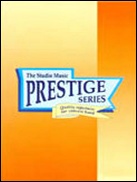 £119.95
£119.95LINDISFARNE RHAPSODY, A (Flute Solo)(Prestige Concert Band) - Sparke, Philip
Commissioned by Kenneth Bell, principal flute of the Central Band of the Royal Air Force, this delightful work is challenging but approachable and the perfect vehicle for your star flautist! (Grade 5) Performance time 13'31". "Good flautists will find this a good piece to add to their repertoires, as it presents different challenges to the standard solo fare. The solo line is particularly well set against the band as it rarely travels to the lower register of the flute. The work opens with an extended section of lyricism followed by skittish dance. The central ''andante con moto'' is particularly delicate before the final section heads off and ends in a thoroughly unexpected conclusion!" Winds Magazine (Recorded on QPRM129D VENETIAN SPELLS, Central Band of the Royal Air Force)
Estimated dispatch 7-14 working days
-
 £60.99
£60.99My First Solo Wind Band Set (Score & Parts)
You only have had a couple of months of lessons and already you are to play a solo at your band's annual gala concert. in a big concerthall, on a huge platform and in front of people from your own town or village. Now there's something ! This circumstance inspired Jerry Bensman into writing your very first solo piece with band accompaniment. The solo part may be played by various instruments and was kept very simple indeed. Parts are available in various transpositions and keys. 02:45
Estimated dispatch 7-14 working days
-
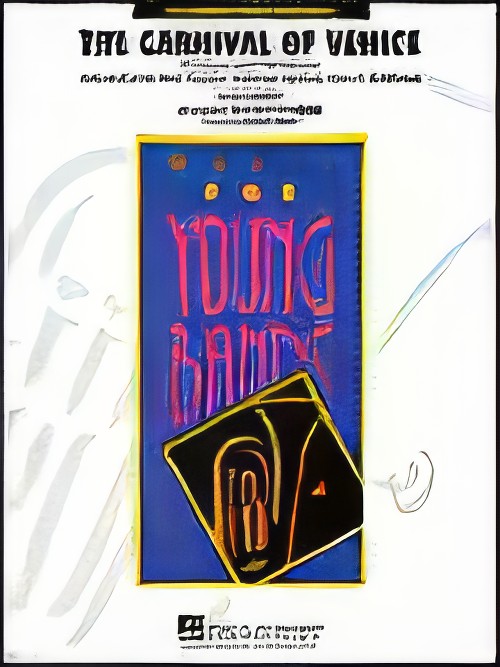 £72.99
£72.99The Carnival of Venice (Flexible Solo with Concert Band - Score and Parts) - Arban & Benedict - Vinson, Johnnie
Solo feature for Flute, Trumpet, Trombone, Baritone, Tuba or Xylophone.One of the best-known solo vehicles ever written is now available for younger players in this skilfully crafted setting by Johnnie Vinson. With several options for the featured instrument, this is a great way to showcase standout players year after year.Solo part - American grade 4, Band set - American grade 3
Estimated dispatch 7-14 working days
-
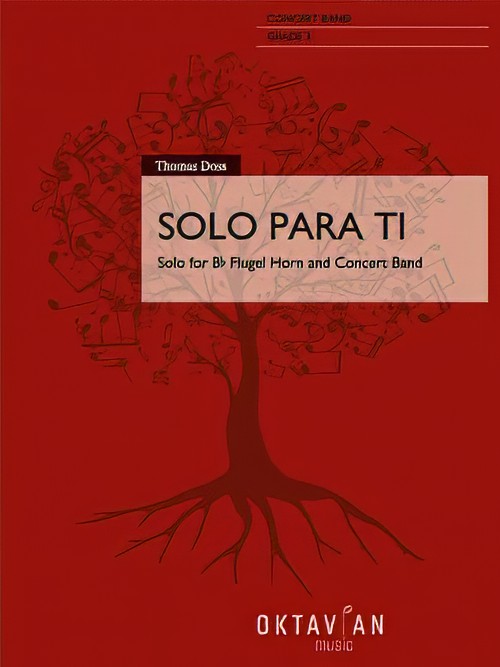 £71.99
£71.99Solo Para Ti (Flugel Horn Solo with Concert Band - Score and Parts) - Doss, Thomas
Solo Para Ti is a calm and expressive composition for Bb Flugel Horn solo, which can optional be played with English Horn, Eb Alto Saxophone or Bb Trumpet. This work was commissioned by the Blaservereinigung Albachten 1921 in honour of its conductor Philip Watts.Duration: 4.30
Estimated dispatch 7-14 working days
-
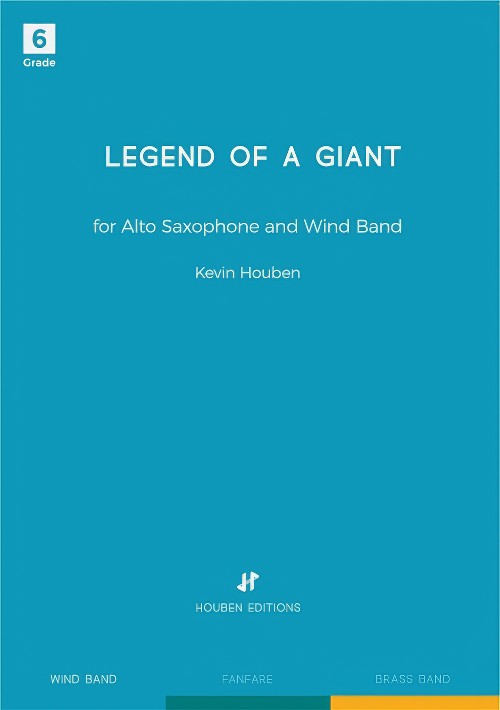 £149.00
£149.00Legend of a Giant (Also Saxophone Solo with Concert Band - Score and Parts) - Houben, Kevin
Legend of a Giant is a composition for solo alto saxophone and Wind Band composed by the Belgian composer Kevin Houben. The composer dedicated this challenging saxophone concerto to the Spanish saxophone virtuoso Mariano Garcia. The work had its premiere in May 2021 in the Lemmensinstitute with the Wind Band of the LUCA School of Arts in Leuven (Belgium) conducted by Ivan Meylemans. Mariano Garcia is a full time professor saxophone at the LUCA School ofArts, the Conservatorio Superior de Musica de Aragon in Zaragoza (Spain) and the Wiener Akademie Musik (Austria). As in any classical concerto the saxophone soloist 'competes' with the ensemble: first alternately, in dialogue with each other, afterwards fraternally together. Moreover the ensemble is regarded as an equal partner, therefore also for the musicians of the group, this cinematic score presents a tough challenge. Legend of a giant immerses the listener in the world of the saxophone and challenges the soloist in the field of lyricism and timbre, but also on a technical level. In this way various aspects and modern playing styles such as bisbigliandos, double staccato, frullatos, glissandos, harmonics of overtones, pass in review. In a word: a tough 'challenge' for any saxophone virtuoso! A simplified version of the saxophone solo part also exists.
Estimated dispatch 7-14 working days
-
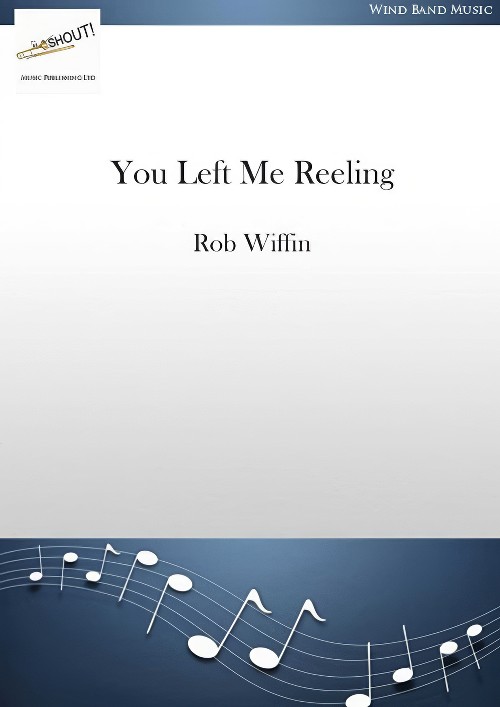 £36.95
£36.95You Left Me Reeling (Clarinet Solo with Concert Band - Score and Parts) - Wiffin, Rob
A fun and challenging solo for clarinet and band. This fast and increasingly frantic solo started life as an attempt to capture the quintessential spirit of Irish Reels. It's a real work-out for the soloist, not that the rest of the band remains completely unscathed. The reels appear in various guises and the dancing becomes more frenzied as the pace accelerates to the end. Duration: 3.30
Estimated dispatch 7-14 working days
